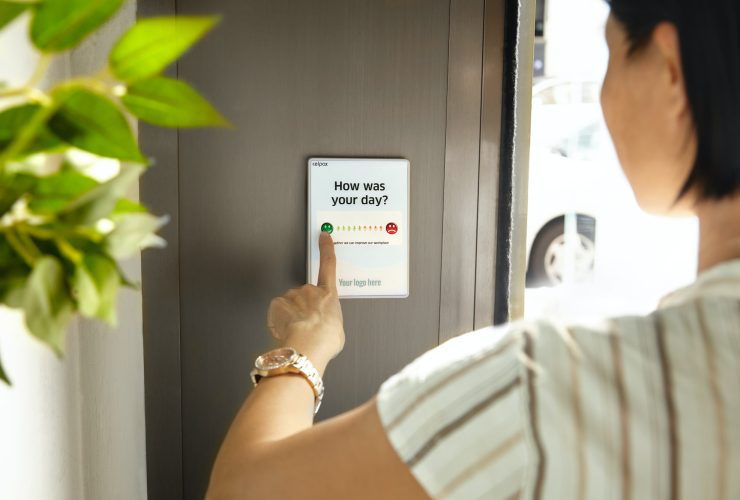The Essential Elements of a Practice Website
Every doctor has a website. But not all websites are created equal. In this week’s episode, we take a look at the essential features of a great practice website, how to utilize your website to the fullest, and how you can set your practice website apart from the rest.
Episode Transcript
Hey, what’s up everybody, and welcome to the Medical Marketing Podcast from Messenger – the show where we give you actionable tips and advice to help improve your practice marketing, grow revenue, and take patient experience to the next level. I’m your host, Crawford Ifland, and today we’re going to be talking about one of the most powerful – and frankly, one of the most underutilized – parts of your marketing arsenal. That’s right – I’m talking about your practice website.
Now, you heard me say the word “underutilized,” and maybe that was surprising to you. I mean, think about the world we live in – doesn’t everybody have a website? Isn’t that a bare minimum requirement for running a business in 2019? How could a website possibly be underutilized?
Misconception: “If we build it, they will come.” But that’s not how marketing works.
To have a website is one thing – to use it properly to advance your marketing goals? That’s something else entirely.
Yes, your website should have basic information on it: your contact info. The services you provide. What insurances you accept. The fact is, many doctors stop here. They figure that the information alone is enough, that patients will magically find them, and that their schedules will fill up, just by virtue of them “being there.” But that rarely ever happens.
So today, we’re going to be looking at 3 elements that make a practice website really great: a structure that facilitates ease of navigation, prominent contact information on every page, and clear calls to action that make your website “idiot proof.”
We’ve all had that experience: not being able to quickly find what we were looking for online because a website as poorly designed. If you were alive in the late 90’s or early 2000’s, you know that I mean.
But it still happens today, and it’s infuriating when it does. Not only that, but it reduces the effectiveness of your website. In fact, it only takes about 50 milliseconds (that’s 0.05 seconds) for users to form an opinion about your website that determines whether they like your site or not, whether they’ll stay or leave. And 3 out of 4 consumers admit to making judgements on a company’s credibility based on the company’s website design.
If your patients can’t find what they’re looking for, they’ll leave – especially on mobile devices. In fact, 57% of internet users say they won’t recommend a business with a poorly designed website on mobile. And it’s important to note that we’re not just talking about aesthetic design here, though that’s definitely important. We’re really talking about functional design: think about layout, navigation, and overall site structure.
So, if you want to utilize your website to its fullest, you have to make sure it’s easy for patients to get around and find what they’re looking for. And what are they looking for most often? Contact info.
Prominent Contact Info
I can’t hammer this point home hard enough: you need to have prominent contact info on every single page of your website. No exceptions. You’d be surprised how many websites only display contact info on their “Contact Us” page, but not on every page of their website.
Often times, patients will have questions that can be most easily answered with a phone call, so it’s crucial to have this info where they can find it easily – if a patient has to go searching to find contact info, that’s a missed opportunity – they’ll never call.
And even if a patient has already booked an appointment, it’s most likely their first time interacting with your business in real life, so they may need directions. Having a map of your office, but also a link to Google Maps where patients can get directions is a super easy fix that can yield great benefits. Patients may never think of small things like this as a “plus” in their experience, but I guarantee it will loom large in their minds if they have a difficult time finding what they’re looking for.
Now, if we step back a bit, the main point of your website is to bring new patients in the door. Contact information is helpful for patients who have a question, but what about those who may be a little closer to taking the next step? Are you coaching them in the right direction?
Clear Calls to Action
Much like the last point, you should have clear calls to action on every page, just like you do contact information.
The kicker here is that you should only have 1 call to action per page. I can’t stress this enough: if patients have too many choices, they won’t make a choice at all. There’s some interesting psychological research on this that we’ll get into in a future episode, but suffice it to say that we can easily be overwhelmed.
This is what we call making your website “idiot proof.” The goal is that if someone lands on your website – regardless of who they are or how much they know about your business – they should be able to understand who you are, what you do, and most importantly, what they should do next.
We see tons of practices who go overboard with CTAs, and it has a dilutive effect. If you want patients to take action, you have to make it crystal clear which action they should take.
If they’re on a page explaining a service or procedure, make it a self-test. If they’re on a “Contact Us” or Appointments page, make appointment scheduling the only option they can choose. If they come to a landing page from an advertisement, make sure the CTA matches exactly the ad they clicked on, and nothing else.
If you reduce the number of choices a patient can make, you’ll actually increase the chance of them making a choice in the first place. So make your calls to action crystal clear so that your website is “idiot proof.”
Well, that’s all for today’s episode of the Medical Marketing Podcast. Thanks for listening! Join us again next week when we talk about a few elements of patient experience that you might not be thinking of…
As always, we’ll have a link to the show notes in the description, and be sure to check out www.messenger.md for more resources on how to improve your practice marketing, grow revenue, and take your patient experience to the next level.







